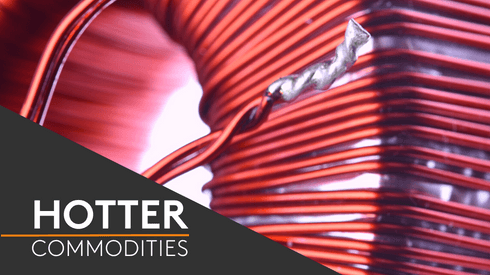Metal Bulletin’s Charlotte Radford takes a look at some of the key news and price moves from the last seven days.
This week saw signs that nickel shorts were rolling their positions in the Shanghai Futures Exchange’s July contract into September – possibly at big losses – in the hope that more nickel will be available for delivery against the contract by then. Metal Bulletin examined the recent developments in the SHFE July nickel contract here.
In the country’s copper market, a surge in prices across the world forced Chinese hedge funds to reconsider their strategies and cut their short positions. Shanghai Chaos’s recent losses on copper short positions have been estimated at 300-500 million yuan ($49-82 million).
Copper premiums suffered on low demand in Shanghai as many buyers acquired sufficient stocks before the Chinese Labour Day holiday on May 1. Even so, SHFE’s copper stocks fell, suggesting demand could pick up.
Beijing is expected to relax restrictions on state-owned enterprises’ (SOEs) commodity derivative trading activities. The country’s SOEs are currently overseen by the State-owned Assets Supervision and Administration Committee (SASAC), but an easing of controls could allow greater trading of futures, swaps and options overseas.
Henry Bath, meanwhile, announced that it is to open its own warehousing facilities in the Shanghai Free Trade Zone in a “major milestone” for the company.
Andrea Hotter examined the aluminium rebate system in light of complaints against Chinese extruders’ exporting patterns.
Initial customs data revealed that China’s aluminium exports were up 30% y-o-y in in April, continuing to support a bearish view on the metal’s falling premiums in Europe and further afield…
In Brazil, domestic and import aluminium premiums continued on a downward trajectory due to weak end-user demand. Domestic premiums have fallen by an average of 20% since the beginning of the year; Danielle Assalve had the full story.
And in North America, US Midwest aluminium premiums fell again this week, with no consensus as to whether premiums were beginning to stabilise.
A series of articles will examine allegations of manipulation in the aluminium market next week.
It was a mixed week on the LME, with nickel gaining nearly 4% on May 5. Aluminium prices fell 2% on May 7, and at the time of writing, were slightly down on May 8.
Company results came in thick and fast last week. Glencore’s quarterly results showed that zinc output was up 16% y-o-y in Q1 2015.
And profits from Noble’s mining and metals division fell 33% in the first quarter of the year.
In tin, members of the Assn of Indonesian Tin Exporters (AETI) were in talks this week on how to split the 2,500 tpm of tin exports following the introduction of a new cap in Bangka-Belitung. Claire Hack spoke to the president of the AETI, Jabin Sufianto about the plans.
And in South Africa, business rescue appointees said Evraz Highveld Steel & Vanadium has a “reasonable prospect” of recovery following the implementation of business rescue procedures last month.
Nevertheless, South Africa’s Vanchem Vanadium Products declared force majeure as operations came to a temporary halt at Evraz’s Mapochs mine.
Kudumane Manganese Resources (KMR) has resumed normal trading after being taken out of business rescue.
In the markets, European ferro-molybdenum prices fell below $19 per kg for the first time in over 11 years on May 6, as the market continued to lack support signals.
And, in people moves, Abdumalik Mirakhmedov stepped down from his role as ceo of marketing at ENRC.
Charlotte Radford
charlotte.radford@metalbulletin.com




